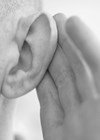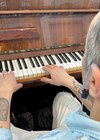Audiology features
Audiology support for Philippine call centre employees
Call centre employees face unique challenges that impact their hearing health. BPO companies are implementing initiatives in the Philippines to safeguard their auditory wellbeing. The Business Process Outsourcing (BPO) industry in the Philippines is a dynamic and rapidly growing sector....
Addressing the non-use of hearing aids
We all know non-use of hearing aids occurs, but why, and what can we do about it? Numerous studies have investigated the challenges surrounding the underutilisation of hearing aids, examining factors such as reluctance to seek assistance, the impact of...
Why and how to assess digital literacy of older adults with hearing loss
Assessing digital literacy in older adults with hearing loss is vital for equitable care. The new DL-2Q tool quickly measures such skills, ensuring tailored support and better outcomes. Digital literacy and its importance When an older patient walks into your...
Hyperacusis and autism spectrum disorder
Several different auditory deficits have been found to be co-morbidities of ASD. This article reviews literature with respect to the relationship between hyperacusis and ASD. Autism spectrum disorder (ASD) can be characterised as a neurodevelopmental condition that is marked by...
Cacophony: the art of communicating deafness by Anita Ford
Here, we discover the profound exploration of deafness through art by Anita Ford. Her Cacophony series delves into the challenges of communication and isolation. Anita Ford was a prolific printmaker and painter. She studied at Loughborough College of Art, obtaining...
Marshall Chasin: the harmony of music and audiology
Marshall Chasin, synonymous with the science of hearing and the art of music, discusses the techniques and technology he has employed over this career... so far. What’s the difference between your practice now and when you first started out? I...
Annelies Kusters: exploring deaf communities globally
Pioneering deaf scholar, Annelies Kusters, shares insights from her global research journey spanning two decades in deaf communities worldwide. You’ve travelled the world extensively through your work – what’s surprised you most about the different communities that you’ve studied? My...
Enhancing the pure-tone average calculation method for reporting hearing outcomes: the need for a transition to the logarithmic mean
Comparing studies requires common approaches. Ali Faramarzi takes a moment to consider how to tackle the presentation of audiometric data in publications. Uniformity in reporting hearing outcomes is paramount for accurate evaluation and comparison of hearing-related research. Standardised guidelines are...
How to deliver bad news better
Delivering bad news well takes experience and time. The Ida team recommend the SPIKES protocol; providing structure for relaying bad news, giving confidence to those delivering it, and leaving recipients feeling cared for and informed. It’s among the most distressing...
Audible Contrast Threshold – a new test to guide setting help-in-noise features in hearing aids
A new diagnostic test that is quick and has directly applicable results to hearing aid settings has arrived, but how does it work? Leigh Martin has the answers. In an earlier article for ENT & Audiology News, Parmar and Rajasingam...
Tinnitus treatment device from concept to commercialisation
Innovation in the field of healthcare is fraught with nearly insurmountable challenges. Bringing a novel product to the market requires a new (patentable) idea that can be reduced to practice, manufactured at scale, and can pass all regulatory barriers. In...
The use of social media to drive practice growth
Cliff Olson is the most successful user of social media in the hearing care industry as of the date of this publication. His videos have been viewed worldwide, and he has more YouTube followers than all the major hearing aid...

















